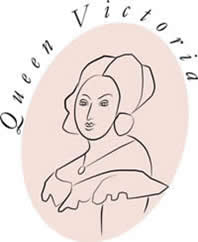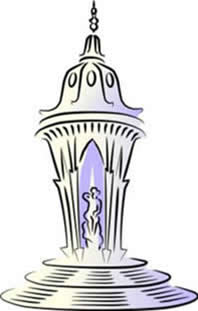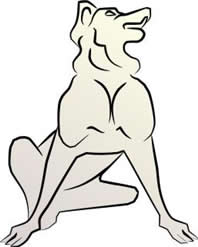Victoria Park has had an extraordinary history – being used, from the start, as a meeting place for those working to improve industrial and social conditions.
In 1848 the Chartists (an influential movement that pressed for parliamentary reforms and a wider democracy) held an enormous rally in the park. Decades later, during the Great Dock Strike of 1889, local dockers used the park as a meeting place to vote on principal issues.
During World War II, Victoria Park was cultivated to grow food. It also provided cover for anti-aircraft batteries and housed service personnel and the Home Guard.
Victoria Park remains at the heart of the East Endand continues to host major contemporary music events and community festivals. (See links below for details).
Bounded by Bethnal Green, Hackney, Bow and Stepney, Victoria Park is a vast, scenic public leisure park to the East of the City of London, in London’s Borough of Tower Hamlets.
Known as the Regent’s Park of the East End, Victoria Park - with its wide tree-lined carriageways, deer park, lakes, leisure gardens and ornate bridges over canalways - is a stunning example of a formal Londonpark of the Victorian era. Often referred to as London’s first public park, Victoria Park is still considered to be, primarily, the ‘people’s park.’
Mid-nineteenth century London was an extremely unhealthy place to live. For most Londoners in the poorer areas, conditions in the workplace and home were appalling. Houses and workshops were shabby, overcrowded and airless. There was little water for daily use and hardly any clean drinking water. There was high unemployment and a high birthrate. East Enders were offered little or no education and had no access to clean open spaces or leisure faclilities.
London’s East End was one of the main concerns of the time. In 1839, a Report by the Registrar General noted the extremely high mortality rate for the East End - as compared to other areas of London- and recommended the creation of a public park. A year later, a petition signed by 30,000 local residents was presented to Queen Victoria requesting a Royal Park be built within Tower Hamlets. In response, Victoria Park was conceived from the outset as a public leisure venue. Design work began in 1842 and the building work was completed in 1850.
Victoria Park was laid out on land that included Bonner Fields. These fields had recently been extensively excavated for raw building materials by the local brick manufacturers. In the 16th Century the land had belonged to Bishop Bonner (the last Lord of the Manor of Stepney).
Edmund Bonner was born in Worcester in about 1500 and was educated at Oxford. His combined expertise in both ecclesiastic and civil matters attracted the attention of Cardinal Wolsey, King Henry VIII and Cromwell and he was quickly appointed to the diplomatic services. His career spanned a turbulent time with changes to England’s monarchy and religious direction.
Bishop Bonner was much hated for his part in the burning of almost three hundred so called ‘heretics’ during the reign of Mary Tudor and the name ‘Bloody Bonner’ came to be used alongside references to ‘Bloody Mary.’ He eventually died in prison in 1569, during the reign of Elizabeth I.
Original features of Victoria Park included The Palm House, the Bandstand and a Pagoda.The Pagoda was orignally built as the entrance to the Chinese Exhibition held in Hyde Parkin 1842. After the exhibition, the Pagoda was purchased for display in Victoria Park. The two-storey Pagoda stood on an island in the centre of one of the park’s lakes but suffered considerable damage during World War II. Over the years it fell into disrepair and was eventually demolished in 1956.
In 1936 the famous Lido opened in Victoria Park. This was an impressive swimming pool complex catering for 1000 bathers at any one time. It was damaged in World War II but was repaired and reopened in 1952. Always extremely popular, the Lido was in use until 1990. It was completely demolished a year later.
There are a number of unusual features in Victoria Park including a pair of stone alcoves (with seating) taken from the old London Bridge before it was demolished in 1831, a highly decorated drinking fountain and two stone sculptures ‘the dogs of Alcibiades.’
Angela Burdett-Coutts was the youngest daughter of Sir Francis Burdett MP whose marriage to a daughter of Thomas Coutts (the wealthy founder of the Coutts Bank) resulted in Angela inheriting a huge fortune at the age of 23. She devoted her life to philanthropic works and came to be known as ‘the queen of the poor.’Because clean drinking water was so scarce in London in the mid nineteenth century – a number of public drinking fountains were constructed throughout the city. In 1861 Baroness Burdett-Coutts gave Victoria Park an ornate, sculpted drinking fountain (designed by H A Darbyshire).
The two stone sculptures ‘the dogs of Alcibiades’ were donated by Lady Aignarth in 1912. They are copies of a 2nd Century AD Roman statue of a Molossian hound recently aquired by the BritishMuseum. This ancient sculpture was discovered in Romein the 18th Century and brought to Britain in the 1750s. It is thought to be a copy of a sculpture of a dog belonging to Alcibiades, a 5th Century BC Athenian statesman and friend of Socrates. There were a number of copies made – one is housed at Hever Castle( Kent).
Use our links to browse our interactive map of Victoria Park Village, visit our What's On page. You can also find out what special events are on in Victoria Park.
Interactive map - Victoria Park Village
What's On in Victoria Park Village




